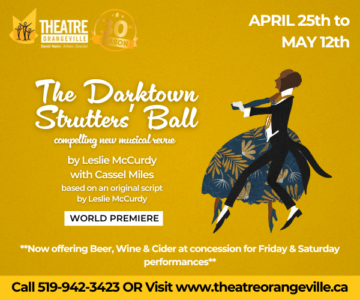Honeybees
We need to learn more about honeybees and other pollinators so we can contribute intelligently to the conversation about their health and well-being.
“Honeybees are endangered,” announced a radio commentator on her gardening show recently. On the CBC another garden show host stated that he hadn’t seen a honeybee in two years, implying the familiar pollinators were in trouble.
I don’t share this perception. Without fail, for decades, honeybees have appeared in my yard in earliest spring to seek out flowering bulbs. They continue to visit my garden through the summer and my asters beckon them in the fall.
On my meadow rambles in the Headwaters I encounter them often. And last year I found two wild honeybee hives, one in a grand old walnut tree on Main Street in Alton.
The concern of the garden show commentators shouldn’t come as a surprise. Reports of colony collapse disorder and of parasitic mites have been media staples for years. This, understandably, has led many to believe that honeybees are headed for oblivion.
We need to remember though that most honeybees live in apiaries. They are domesticated animals that arrived here on European sailing vessels. And like all domesticated animals kept in close quarters, they are prone to the easy transmission of disease. Regrettably honeybees will likely continue to suffer from disease outbreaks. But they are not about to disappear.
However, I must offer one important caveat. There is growing evidence that neonicotinoids, pesticides used to treat the seed of corn and soy, can, if not kill the bees outright, weaken them to the point where existing honeybee viruses and pathogens become deadly.
And if these pesticides are bad for honeybees, they will almost certainly affect the health of the hundreds of species of our wild wasps, flies, beetles and bumblebees that pollinated North American plants long before the arrival of the honeybee, and are, in aggregate, far more important pollinators than honeybees.
We need to learn more about honeybees and other pollinators so we can contribute intelligently to the conversation about their health and well-being. Observing and identifying pollinators among the asters and goldenrod at this time of year would be a good starting point.
More Info
Learn how to attract honeybees to your yard
Plant recommendations can be found at:
Identify pollinators with help from this website:
Related Stories

All Abuzz about Honey: Hockley Valley Honey Farm
Mar 23, 2008 | | Homegrown in the HillsDan Garyfalakis surprised his wife Nina with their first pair of beehives as a gift.

Attracting Butterflies to your Garden
Jan 15, 2015 | | The Flower FarmIt is especially important to have flowers in mid to late summer when most butterflies are active.

Pollinator Friendly Gardens
Aug 28, 2013 | | Notes from the WildWhen I walk into my yard I am greeted by a gloriously diverse menagerie of tiny winged creatures.














